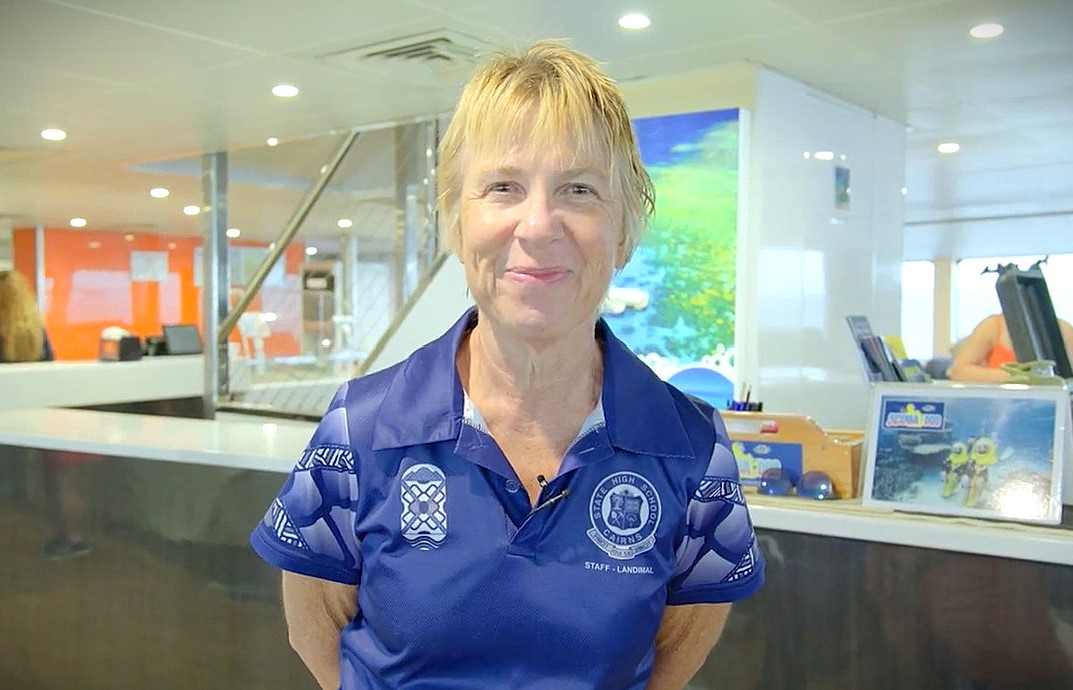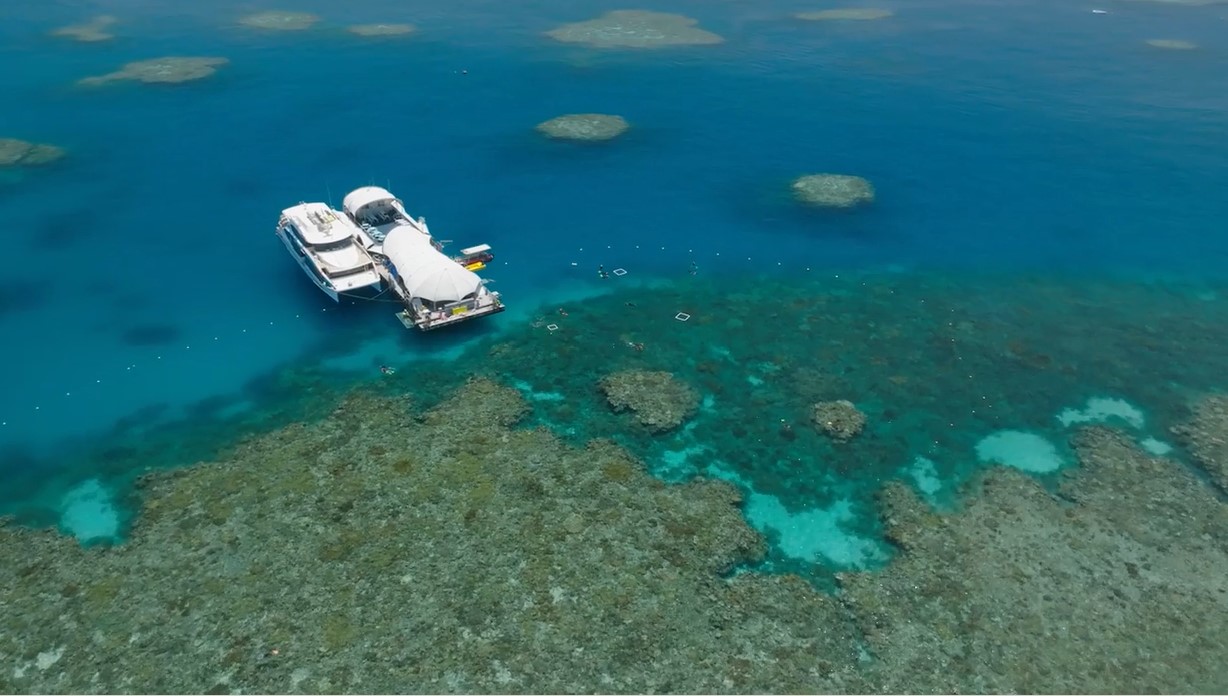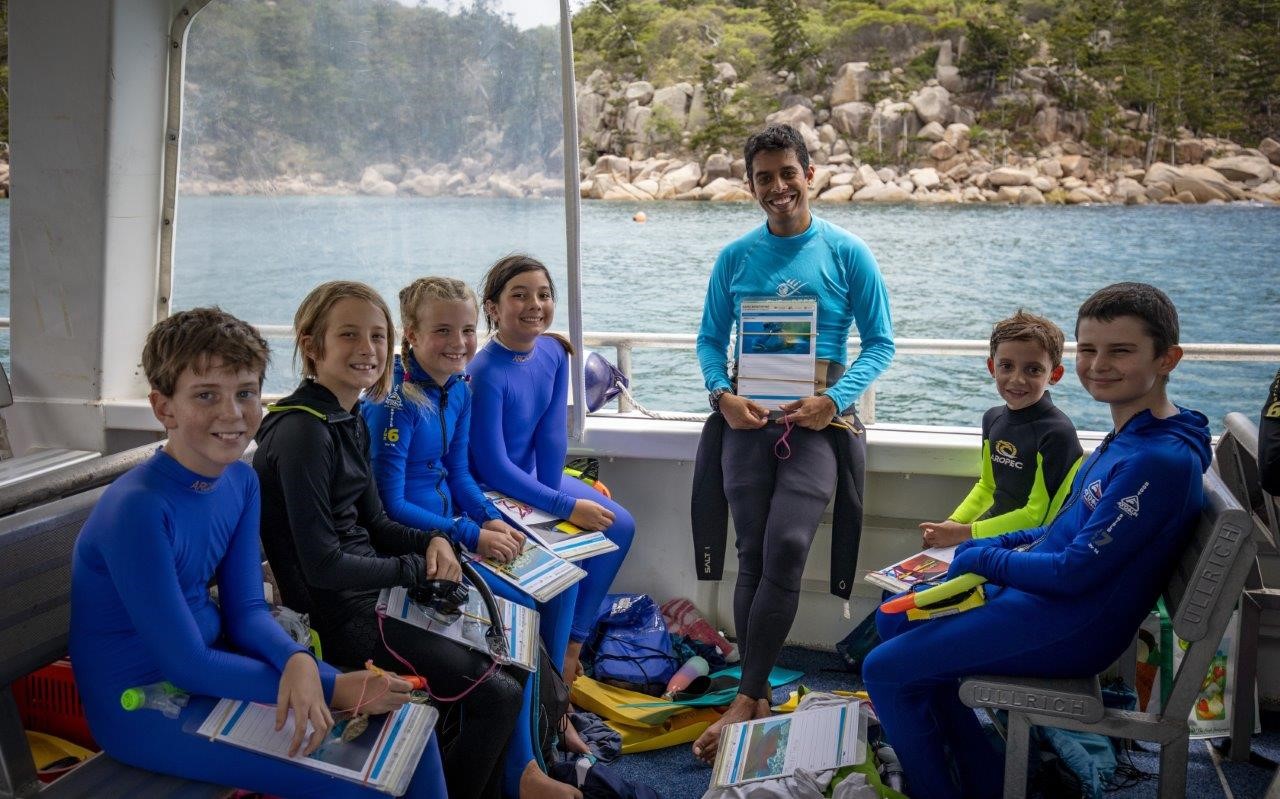With reef tourism crippled due to the pandemic and interstate and international visitor numbers dropping to zero overnight, the Queensland Government responded by introducing the $3.5 million program to help operators diversify into education-based tourism.
Subsidies of up to $150 per student have been provided directly to schools to offset travel costs for school trips, which include a reef experience with a registered commercial reef tourism operator.
While the Government assistance has been a lifesaver for numerous businesses, Cairns State High School science teacher, Cindy Rohan, says the funding has also been a major help to the families of the many students who’ve now been afforded the opportunity to experience the reef.
She and her students live in one of the most biodiverse places on Earth, she says, and the reef affords a great opportunity for students to see it, experience it and learn it firsthand.
“I do like engaging with the kids in that space, because it’s a very different feel to a classroom,” Rohan tells EducationHQ.
“You can look at pictures all you like, but there’s nothing like getting in the water and living it.”
Rohan, whose education career only started when she was 40, having previously raised two children and worked at the Nerada Tea Factory south of Cairns, teaches junior science to her Years 7 to 9 students and marine science to her Year 10s.
She says while her students engage in fieldwork when they’re out on the reef, for her marine students, an important part of their course assessment (over two years) involves collecting data in the field.
With real-world experience at a premium in schools, its invaluable learning for the students.
“The fact that they can go and collect data, they can go and see what it’s like to do that and the difficulties of doing that, particularly regarding fieldwork, it’s incredibly powerful learning,” Rohan says.
“Fieldwork is really hard to do, and then they can actually come back and use it in the classroom, we do calculations, we process that, and they can actually use it in their assessment. I think that’s a really useful thing for them to understand.”

Cairns State High School science teacher Cindy Rohan loves taking her students out to the reef and says “... the opportunity to immerse yourself in this environment so you can learn while you’re here experiencing it – there’s nothing like it, it’s the best way to learn.”
Rohan says for students to understand the link between collecting raw information, and what’s later done with it, provides invaluable experience of the process scientists actually go through in their jobs.
“And not only that, it’s the problem solving. Scientists are problem solvers, I don’t think people understand that. ‘OK, we’re going to going to collect data, but how are we going to actually do this?’,” she poses.
All of Rohan’s GBR trips are to Moore Reef, about one-and-a-half hours by ferry from the Reef Fleet Terminal in Cairns, and she’s almost always accompanied by a marine biologist education officer.
A particularly popular initiative many of her students enjoy is what’s called ‘Eye on the Reef’, a citizen science program, where students survey the different types of fish on the reef, their interrelationship with the different types of coral, the health of the reef and calculating what’s out there in the ecosystem and getting an idea of its health.
“So it’s things like counting the number of fish, looking at the percentage of coral on the floor - is it 50 per cent coral? Is it 25 per cent sand? And we go through all that stuff before they go out,” Rohan explains.
“I swim test them. So we get in the pool, and I test to make sure I know who can swim and who can’t, who I have to provide special care for, and who can dive down and put the quadrat (a plastic conduit frame used to isolate a standard unit of area) on the bottom of the ocean and who can’t, things like that.
“So, I get a feel for the capabilities of the kids in the water.”

All of Rohan’s Great Barrier Reef visits take place at Moore Reef, about 1.5 hours from Cairns, where a permanent pontoon provides a perfect jump off point to the many wonders below the surface.
Beforehand, Rohan will also talk about the threats to the reef and the impact that things like climate change, coral bleaching and severe storms are having, so her kids are able to be out on the reef and applying those perspectives.
The passionate environmental educator says while she enjoys engaging with all of her students in such an extraordinary outdoor ed space, she does love taking her international students to the reef, of which there are always many.
“At the moment I have 10 international students in my Aquatics Practices class – from Italy, from Norway, from Germany, Austria – we get them from all over the place,” she says, laughing.
“I’m taking the Year 10s out soon, so I will probably take them out with me when I go, I’ll let them tag along.
“They just love it. Seeing the enjoyment they get out of it, the joy in their eyes, the experience that they have, watching them having that experience, it’s very cool. It’s a very nice thing to do.”
Interestingly, despite the reef being right on the doorstep of Cairns High School and its 1700 students, many have never visited it, or at best, rarely visit what is considered one of the seven wonders of the world.
“There’s not many students that actually engage with the reef very often,” she says.
“You might think that there are, but there’s not that many.”

While all students engage in some type of fieldwork when they’re out on the reef, for Rohan's Year 10 marine studies, an important part of their course assessment involves collecting data in the field.
She says it’s because of the cost involved, either for local people to own a boat capable of reaching the reef, or to pay to visit on a charter boat, and it’s why the Government subsidising has been such a welcome initiative for Queenslanders more broadly, and for local kids.
While her students don’t require transport to the docks, each receives a discount of roughly $40 off the price of the day, which for many is the difference between parents being able to afford the trip or not.
“So we’re only being refunded some of the actual reef trip, but it is substantial, it brings their trip down to under $100 for the day, and they get fed for that, they get all their equipment, they get a day out on the reef,” Rohan says.
Rohan says with coral reefs being under threat, it’s important that all kids get out and see the Great Barrier Reef, experience it, fall in love with it and then want to work towards protecting it.
Queensland Tourism Minister (and State Member for Cairns) Michael Healy agrees, and says the Great Barrier Reef Education Experience Program has been ‘a great success story for reef tourism operators, schools and students’.
“It’s an initiative I knew would be successful and it’s wonderful to celebrate this milestone of over 30,000 students participating in reef excursions,” he says.
“Every young Queenslander who witnesses firsthand the reef, the more they feel connected to it and want to help promote and protect it for future generations."
He says the program helped tourism operators diversify into a new market when COVID travel restrictions were hurting their businesses.
“It has also driven demand outside the traditional tourism high season with school groups travelling during school term,” Healy says.
“This has provided benefits not only to reef tourism operators, but also accommodation, transport and mainland tourism experiences.”















